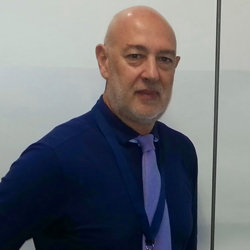New sensors can find a bomb before it’s even ready to blow up
Improvised explosive devices are one of the biggest threats to security in Europe. But what if we could detect those devices, even before they are ready to detonate? The BONAS project hopes to make this possible with a range of early detection devices relying on chemical sensors. Although Europe is generally considered as a safe place to live, isolated attacks over the last decade have put terrorism high on the EU agenda for security. The 2005 London bombings, the car explosion in Oslo in 2011 and the Al Qaida attacks on Madrid’s train line in 2004 speak for themselves: terrorists armed with improvised explosive devices can strike at any moment. And new technologies are needed to find these devices before they put the lives of EU citizens at risk. The EU-funded BONAS (BOmb factory detection by Networks of Advanced Sensors) project holds much promise when it comes to developing these novel, early detection technologies. With 12 partners specialising in research, sensor development, nanotechnology, wireless technologies and field deployment, the consortium aims to develop state-of-the-art sensors to detect the chemical traces left by hidden explosive devices — be it in the air or in water. But the true innovation lies in how far upstream they can do their job. According to project coordinator Antonio Palucci from the Italian National Agency for New Technologies (ENEA), the sensors can detect explosive precursors even before they are turned into an artisanal bomb. In this exclusive interview with the research*eu results magazine, Palucci expands on the project’s objectives, how close he and his team are to achieving them and the odds of these new technologies being used by national security agencies across Europe. What is the main objective of the project? The security of EU citizens is one of society’s main concerns. This is a result of unexpected terrorist attacks or criminal events which have led to explosions and left people deeply shocked, such as what happened in Norway in 2011. The EC has taken various measures to counteract and prevent these events with social and technological instruments. It is now much more difficult and time-consuming to collect, assemble and set up a final ‘Improvised explosive device’ (IED) when planning a terrorist and/or criminal act. The BONAS project is taking these instruments a step further. We have been developing new sensors for the detection not only of hidden explosive compounds but also of the precursors needed for their preparation. All these sensors are connected through a wireless network, which makes their management easier and more effective. Furthermore, we have come up with a strategy to be implemented on site in order to support intelligence services in discovering suspected illegal activities. How does your technology compare to existing detection systems? What’s most innovative about it? We have implemented five technologies to address precursor detection in different states: liquid, particle and vapour. Presently, there are no specific sensors available for precursor detection, so our technological solutions have been created for this very purpose. In particular, some technologies such as lidar (laser stand-off detection of vapour emissions) and QEPAS (in-situ quantum cascade laser detection of vapour emissions) have been tailored to detect specific molecules emitted in the preparation phase. We have upgraded electrochemical sensors to include multi-electrodes for the detection of anomalous substances released in sewage waters. We also matched a handheld Raman sensor with a particle sampler which is itself equipped with a nanostructured enhanced metal surface in order to increase detection capability. Concretely, this technique is using laser technology to identify the chemical fingerprint of explosives in the air and could eventually send a warning when the concentrations reach a certain threshold. What is a typical situation where the wireless sensors could be used? The foreseen strategy for distributing the wireless sensors includes using the sewage piping network, for extensive coverage of a district. Alongside standoff detection (which takes place at greater distances from people and vital assets in order to reduce the risk of severe damage), the sensors can be deployed in situ. All sensors could be camouflaged and deployed around the suspicious item. What were the main difficulties you faced during the project and how did you resolve them? The main difficulty was to match the sampler to the sensors. The mechanical and technical solutions were agreed with partners after different tests. Where do you stand with the feasibility study? Does the technology meet your initial expectations? The feasibility study was completed and I am proud to say that we successfully met the initial requirements. The project is getting close to its end. Do you think mass production is realistic? The network of sensors has already been tested in two field campaigns. The first in June 2014 at the Pratica di Mare (Rome — Italy) Military Airport and in September at the FOI (Swedish Defence Research Agency) facility near Stockholm, jointly with the EMPHASYS project. Of course, due to the specific nature of the application (precursor detection, remembering that the list is classified), real mass production is not realistic for all the sensors. But the handheld Raman spectrometer has recently been introduced to the market by our SME partner. Is your project generating interest from governments, be it in Europe or overseas? Different Italian forensic investigation agencies (Polizia Scientifica, Carabinieri and Aviation Army) have already expressed their strong interest. The FOI is also very enthusiastic about our solutions. For further information, please visit: BONAS http://bonas.tekever.com/
Countries
Italy



